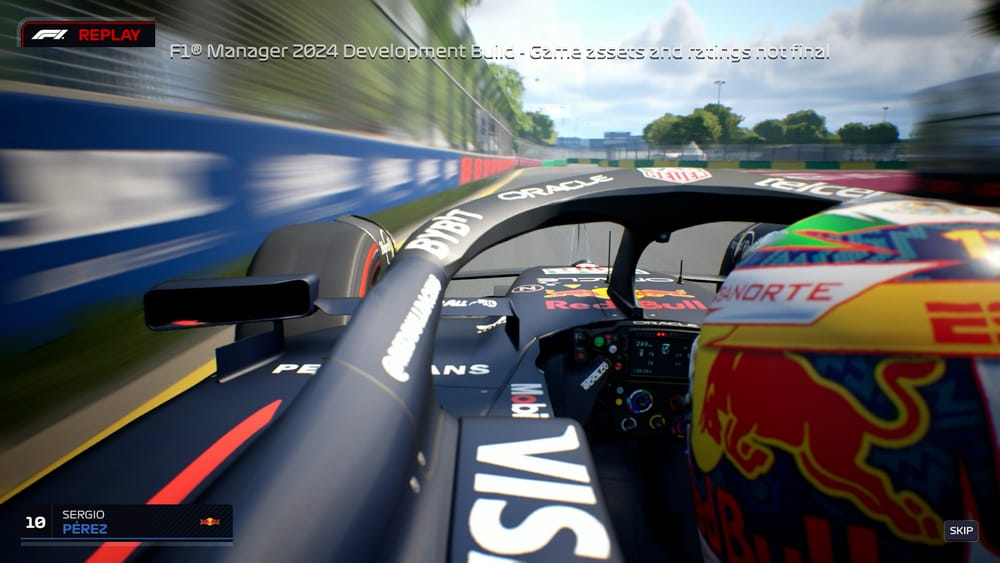Up Next

F1 Manager 2024 is the third entry in the management game franchise developed by Frontier, a series which has generated a lot of hype that it's never quite lived up to.
With this year’s game, the developers have refocused their efforts towards the off-track side of the game.
There are a number of new features and refinements of existing ones that have been made to make each career mode playthrough more bespoke and less repetitive in the long run.
We’ve had a hands-on look at the game and delved into the off and on-track portions of F1 Manager 2024 to what exactly has changed and how much the series has progressed.
The headline new feature
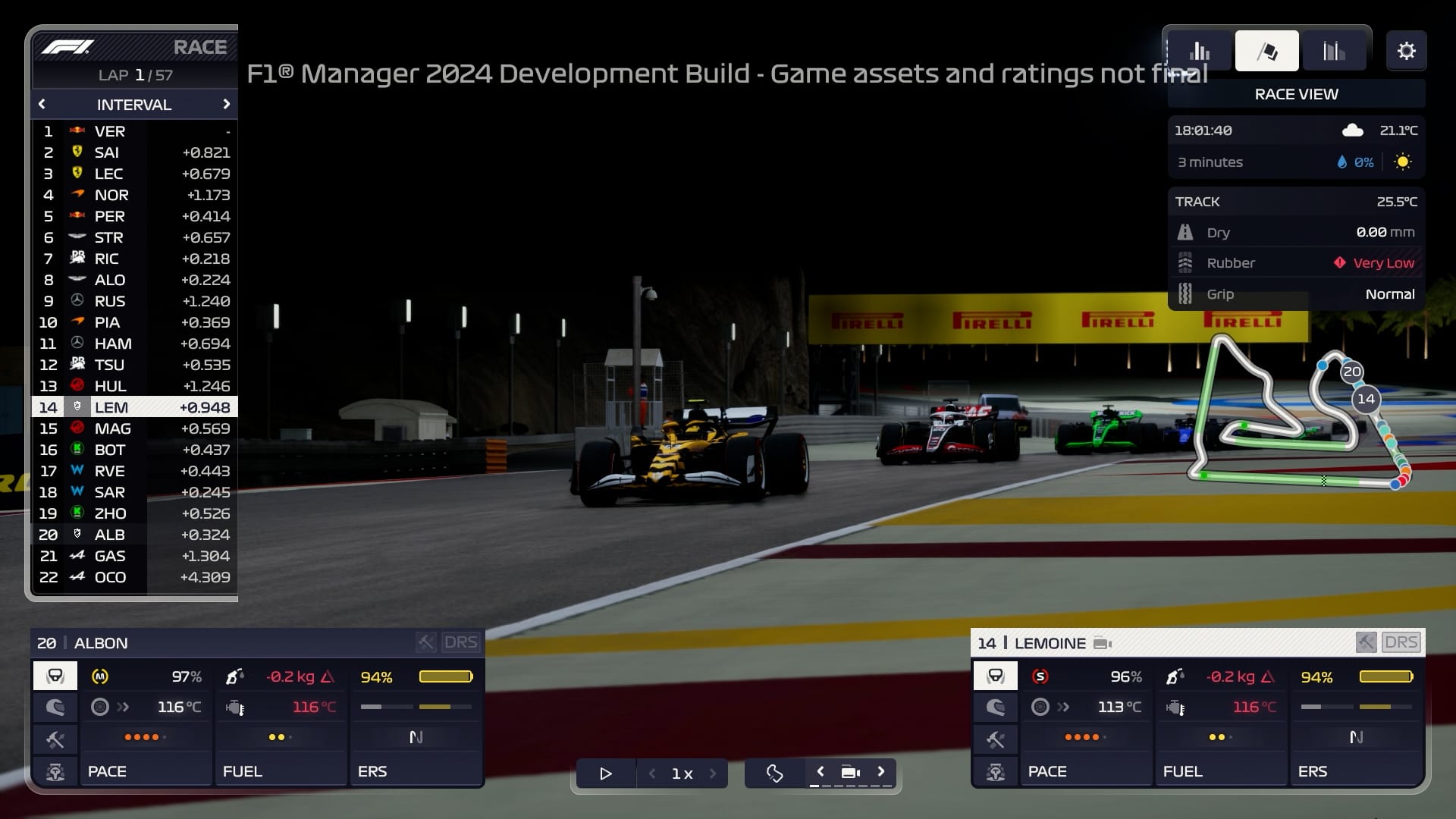
The headline addition to this year’s instalment is the ability to create your own team and manage them as the 11th entry on the grid. Our time with the game allowed us to set up a team and take part in the first race of the season with it.
What’s immediately apparent is a lot of cues have been taken from EA and Codemasters F1 game series when it comes to the UI and team creation. The livery design system is very similar in terms of colour and finish options and adapting pre-made livery templates.
It does set itself apart from the main F1 series though by being able to have gradients in your liveries and drivers’ race suits, as well as by having greater control over sponsorship placements.
There’s six different ‘origins’ - which act as different starting scenarios for your team. Ultimately though you have control over how much money you start with, the quality of your car and team’s facilities, your power unit supplier and who you employ.
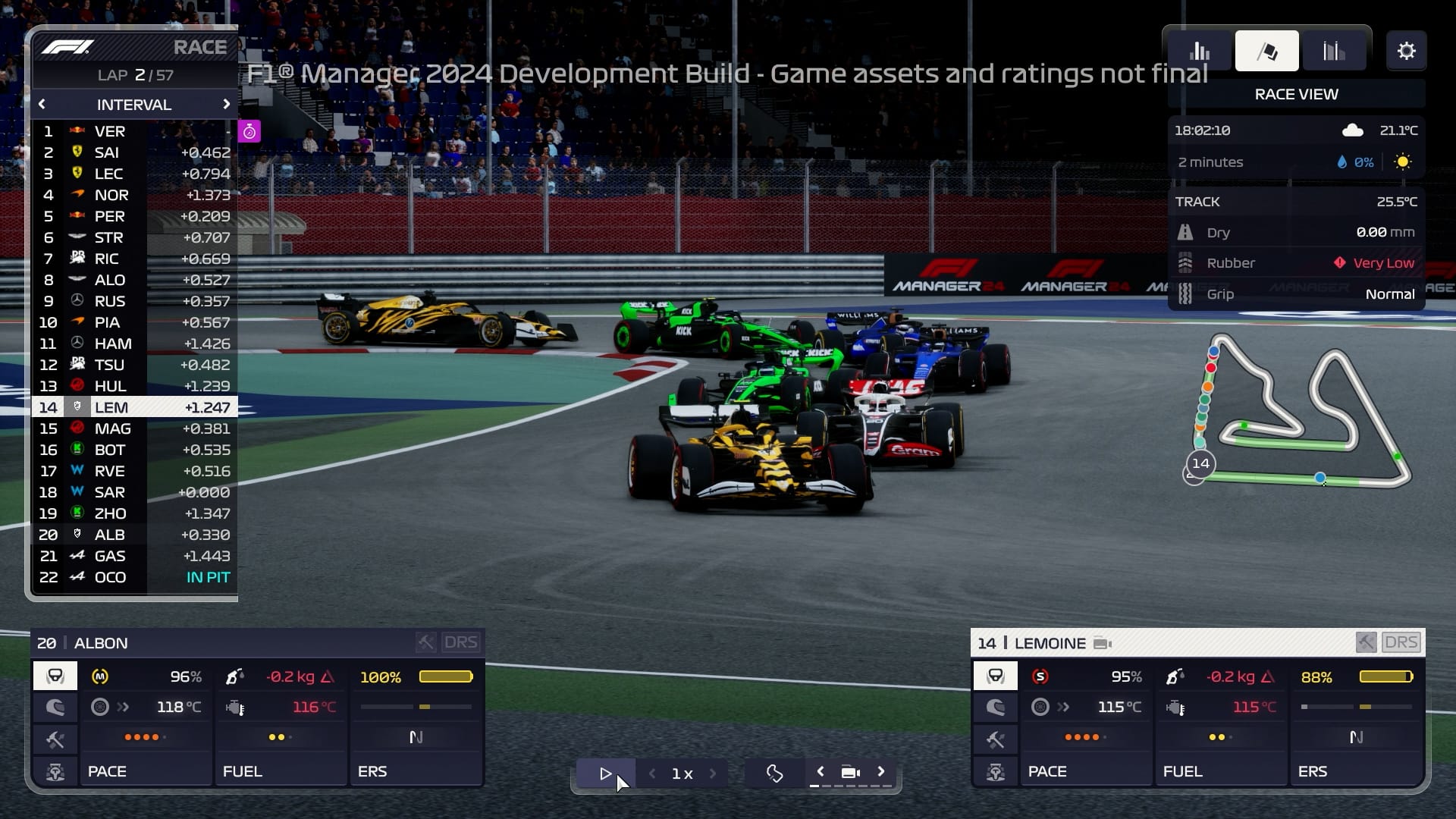
A backmarker quality outfit will limit your options for drivers and backroom staff, but you’ll always be given the option of some existing F1 drivers, those in the feeder categories and some of the game’s fictional personnel.
If you opt for real-life staff then the other 10 teams react accordingly, so the signing of Alex Albon to our created team meant Williams started 2024 with F2 driver Richard Verschoor racing alongside Logan Sargeant.
All-new sponsorship system
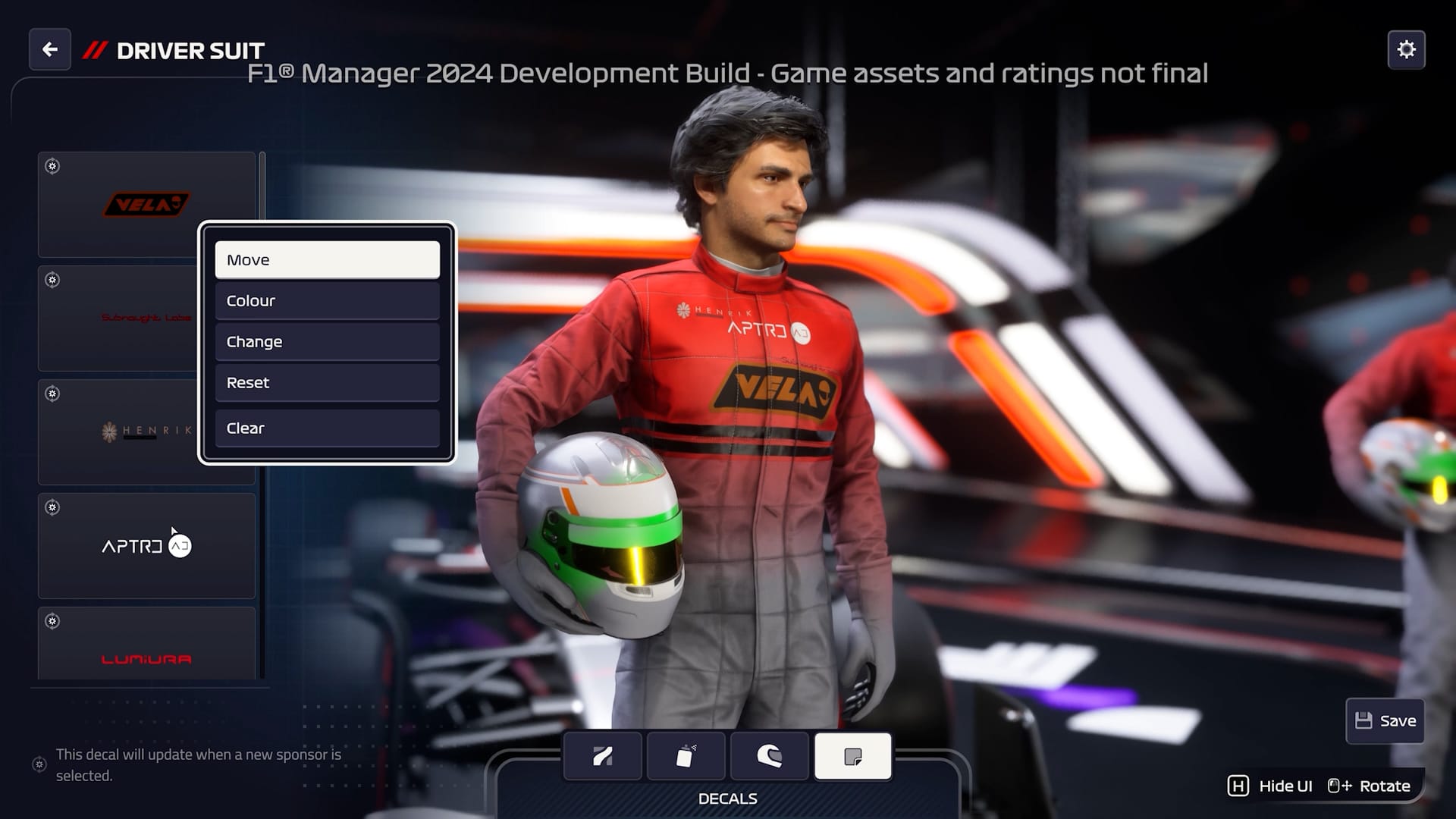
Obviously the look of an F1 team wouldn’t be complete without sponsor logos on your car and drivers’ race suits. Running your own team means signing your own sponsorship deals - with each potential backer offering different amounts of money on different terms.
How much this impacts the running of the team long-term is something we weren’t able to try out. But from race to race it requires you to select certain events to meet a pre-agreed engagement target - similar to the activities from F1 23’s 'My Team' mode.
In contrast to Codemasters, Frontier allows you to manually position, scale, rotate and colour your sponsor’s logos on your car and race suits, rather than just placing them in certain preset slots. That same level of customisation also applies when creating your own team’s logo.
Accompanying this are pre-race targets you set for each of your drivers, with higher promised results netting you more money if you meet your objective. It's a system that will be familiar to anyone who’s played any of the Motorsport Manager games.
Mechanical failures
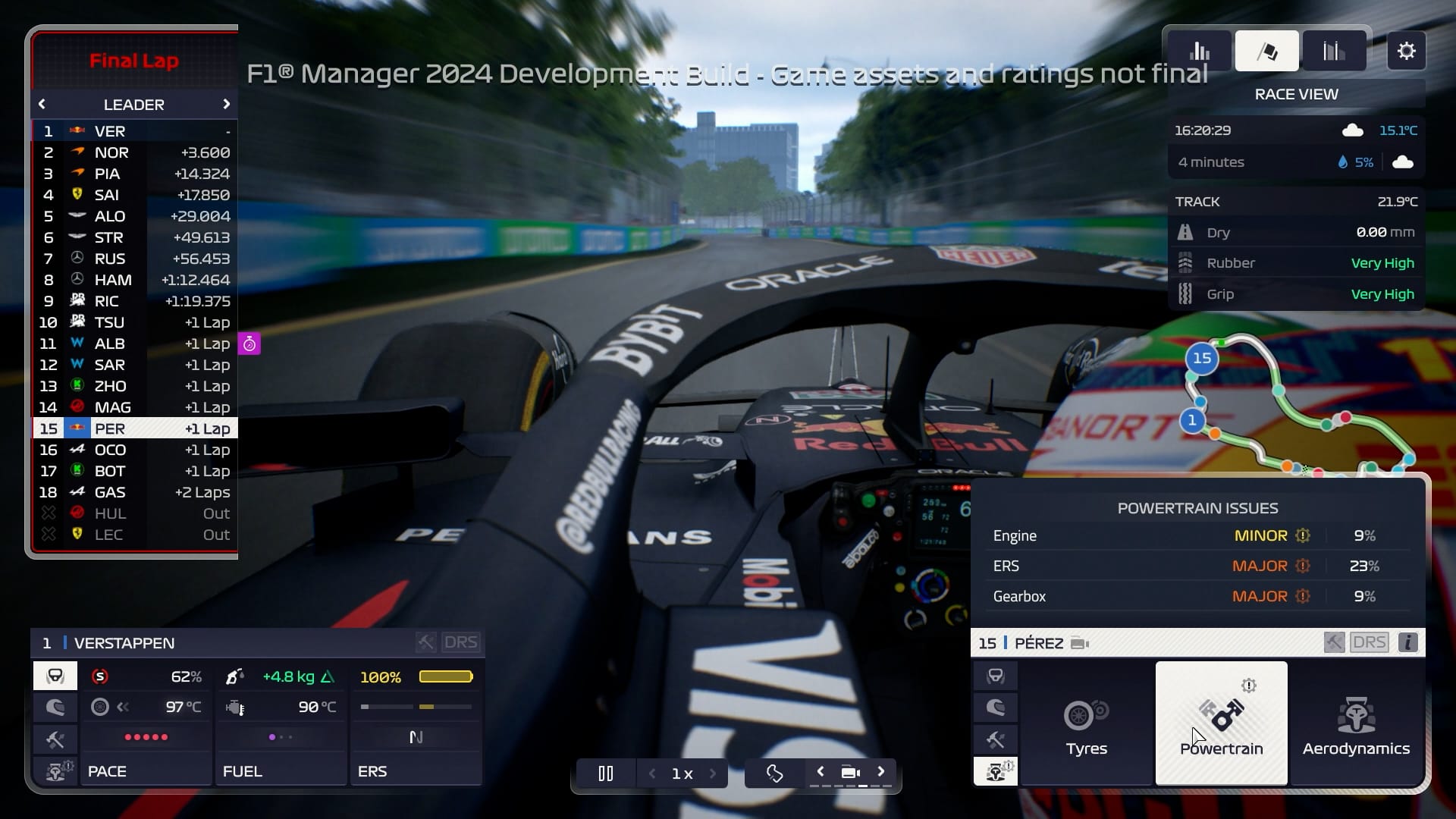
Previous F1 Manager games have put the emphasis on the racing side of running an F1 team but one big omission in F1 Manager 2022 and 2023 was the lack of random reliability failures.
In earlier entries they would only occur if a component completely ran out of life, and doing that would require a lot of negligence and cost you huge amounts of laptime long before your car would stop running.
New to F1 Manager 2024 is the inclusion of totally random mechanical faults which range in severity. At one end there are minor, temporary ERS issues that mean your driver won’t have full electrical power deployment for a few laps.
And at the other end are issues that can force a retirement. This applies to the AI teams as well - with Charles Leclerc missing out on a potential podium place due to a mechanical problem during our session.
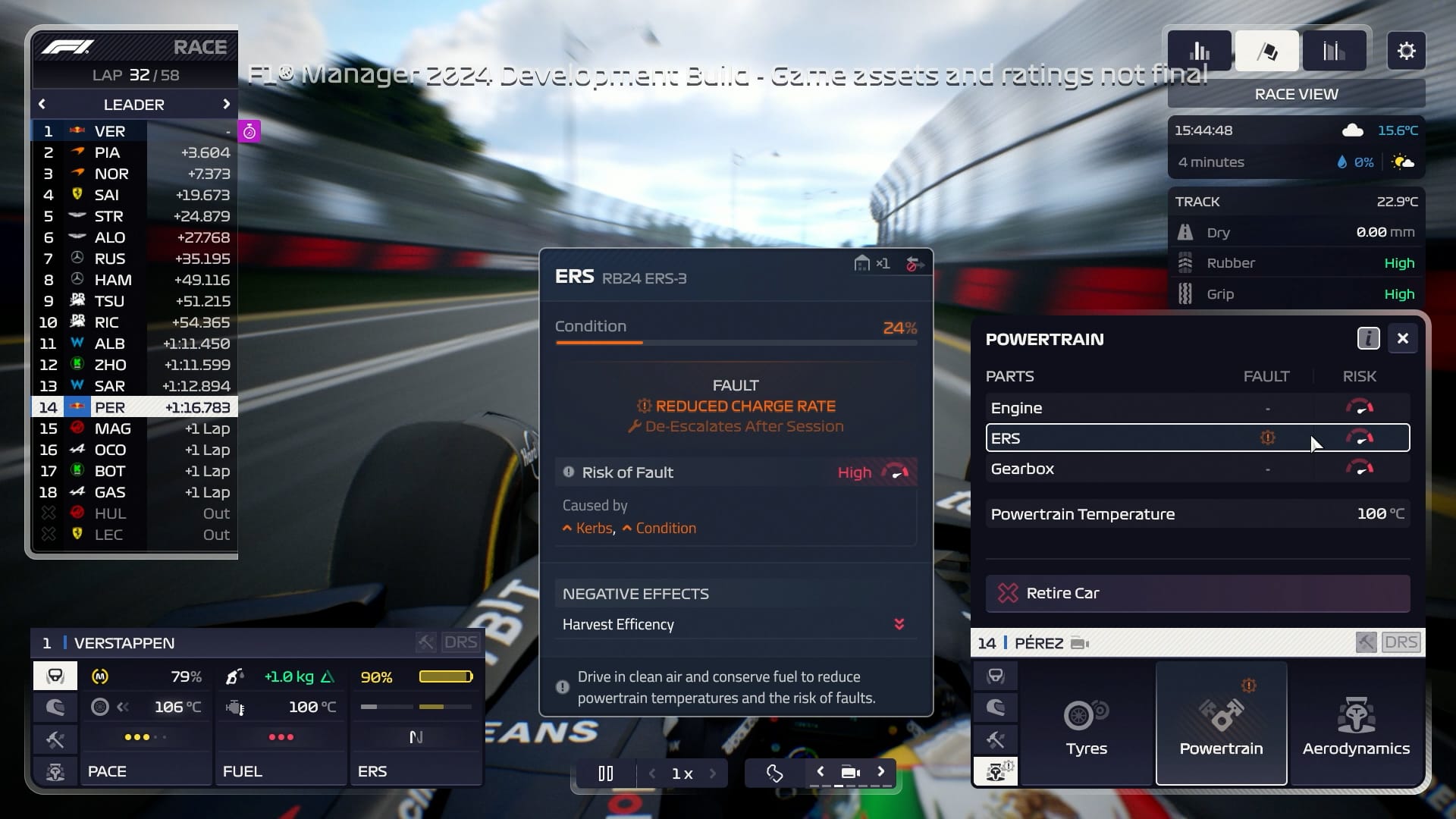
Our time with the game also included a stint managing a Red Bull team that had some significant mechanical issues, rather fittingly, during the Australian GP.
Both drivers started the race in the midfield with no car issues but as the laps wore on the list of problems started to rack up.
Max Verstappen got the better end of the deal as by the time his car developed some major problems he had the track position and just enough pace in hand to hold on to first place, even with Lando Norris lapping slightly quicker just behind.
By contrast Sergio Perez had ERS issues early on that left him stuck in the midpack and slowly dropping even further back. Minimal electrical power coupled with eventual gearbox and engine troubles saw him finish, despite our best efforts, in a lowly 15th.
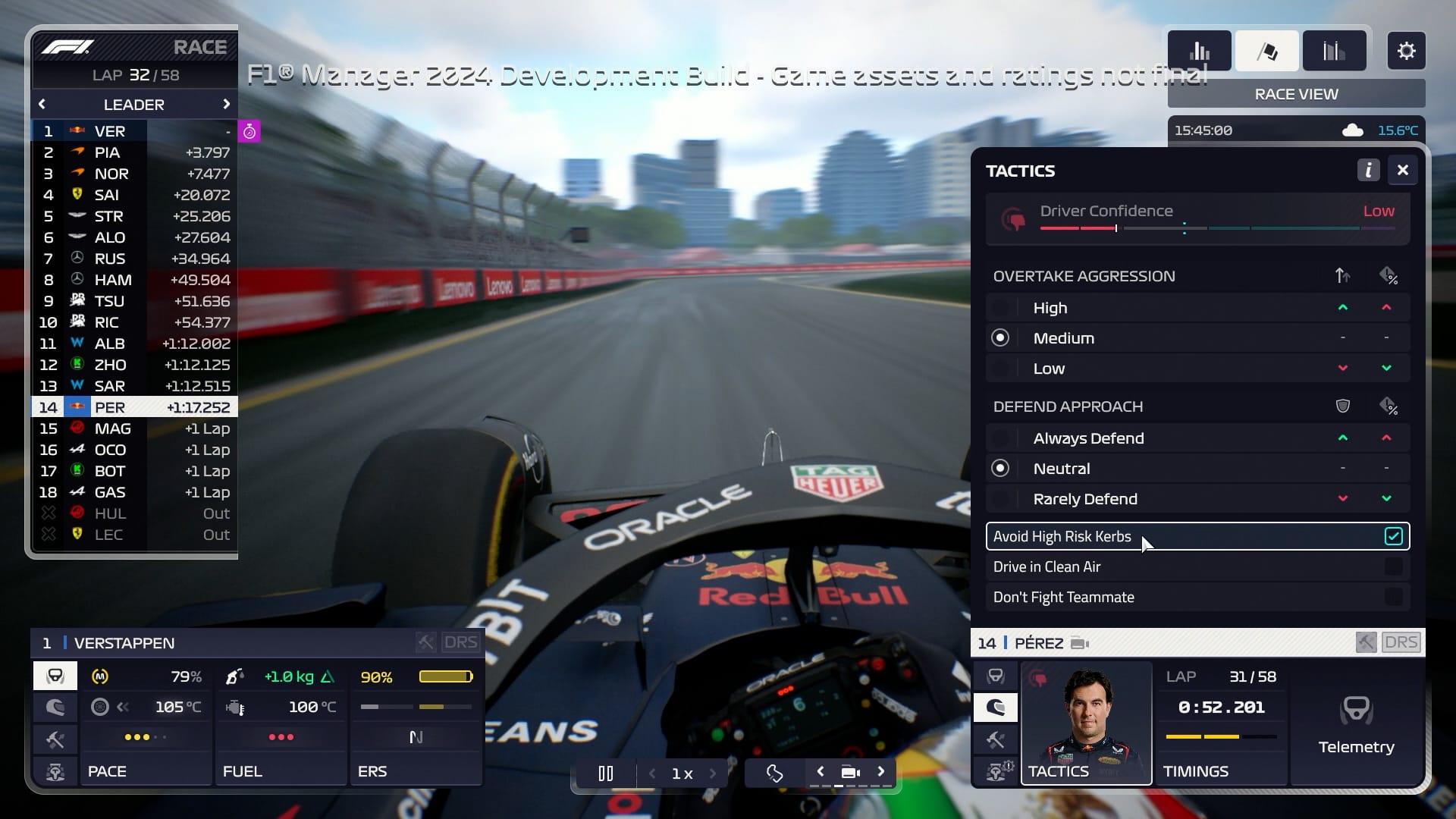
There are some steps you can take to help prevent issues from developing or worsening, such as telling your drivers to stay off high-risk kerbs and to run in clean air. Those instructions existed in the previous games but seemed to have little purpose until now.
Improved driver market
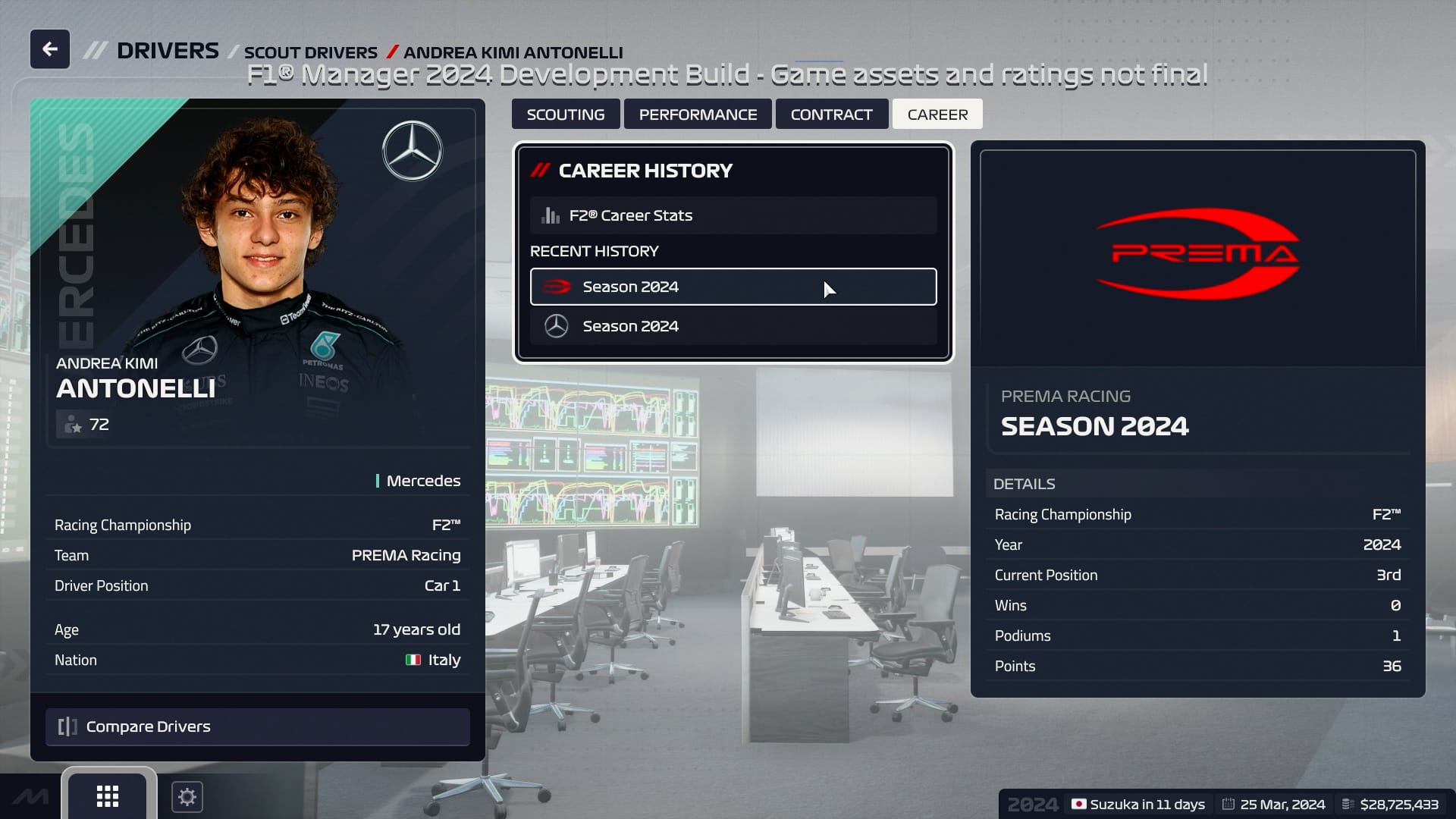
This encompasses a few separate changes, not all of which we were able to experience during our time with the game.
What we were able to get an insight into is the all-new affiliate drivers system, allowing you to essentially create your own driver academy. Any drivers you have as affiliates will seek places in F2 and F3 and can be called up to FP1 sessions.
Affiliated drivers also include those in F1 Academy. Although the female-only series itself isn’t featured in the game, nor is its full line-up - although the final driver roster for the game is yet to be fully confirmed.
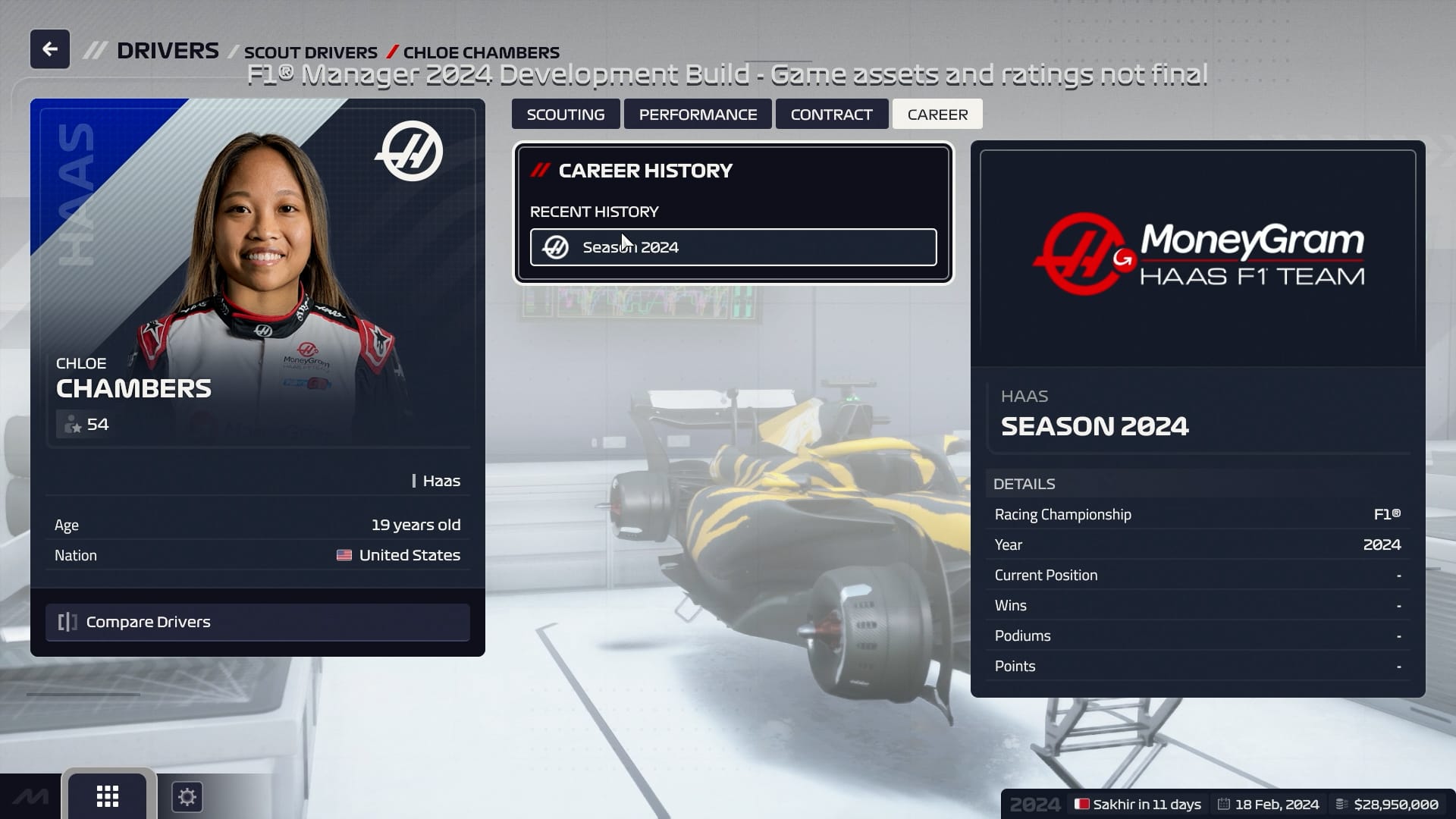
Recruiting affiliates is the same as any driver and they’ll be signed through the revamped negotiation system.
In summary, there’s room for a bit more back and forth as you can have it so the person you’re negotiating with has to respond immediately, or you can give them time to mull on the proposal after which they may give you a clear counter-offer.
Their patience with negotiations will also be dictated by their overall mood, which is handily laid out and explained by F1 Manager 2024’s mentality system.
Car performance, their opinion of you as a team principal, their existing contract and many other factors all impact their view of your team.
Another new facet of negotiations is the inclusion of breakout clauses. That ties into something we haven’t seen play out yet but is certainly one of the more attention-grabbing changes for this year - the fact that drivers and backroom staff can be poached by rival teams early and unexpectedly.
On top of everything above is the all-new heli-cam perspective to view the races and the ability to simulate races completely. The latter is especially useful for players who don’t want to invest the time needed to oversee every race but would like to progress through multiple seasons with their chosen team.
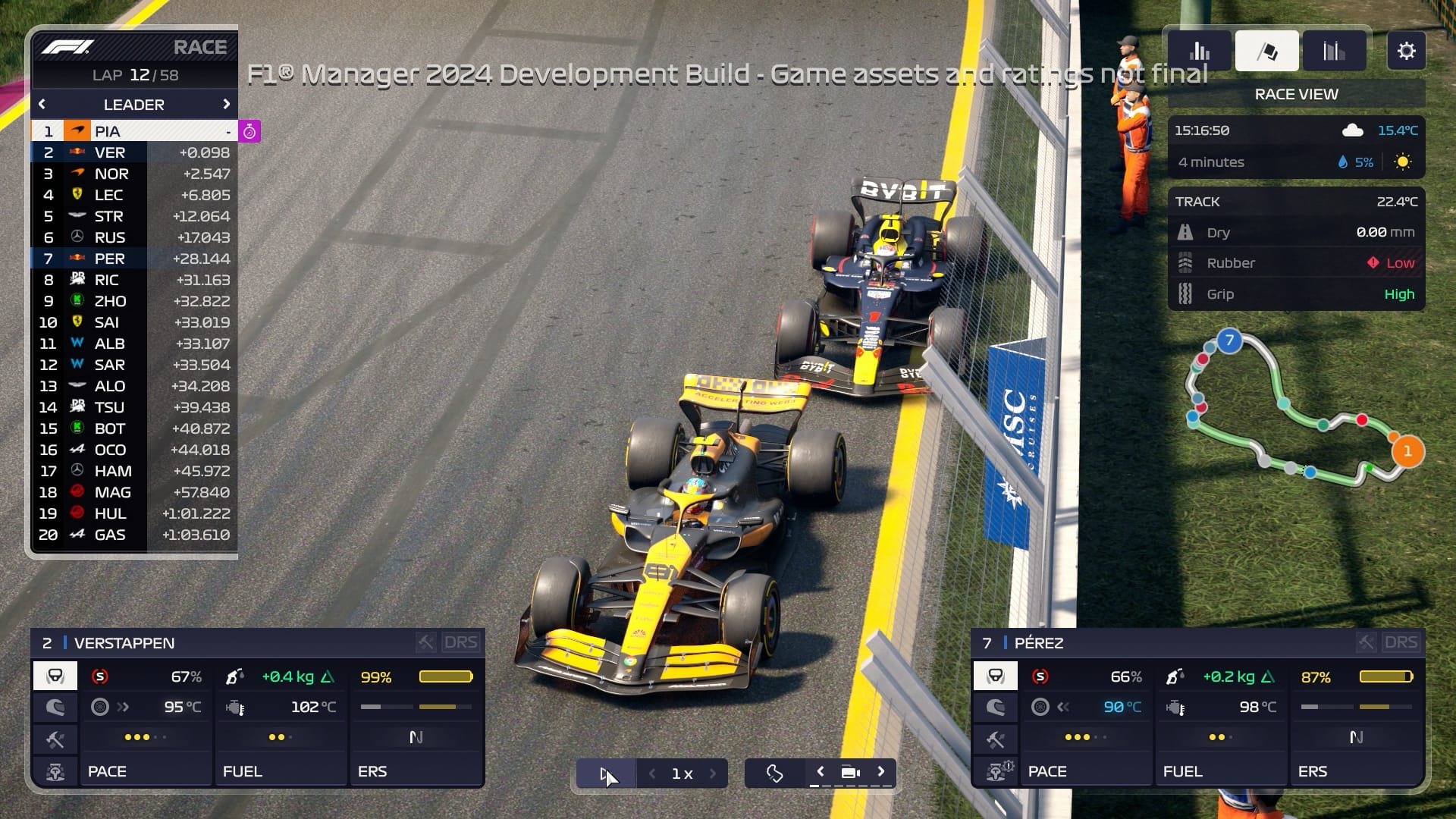
F1 Manager 2024 will be released on July 23 with standard and deluxe editions available priced at £29.99 and £39.99 respectively. The deluxe edition will come with five history-inspired patterns for the create-a-team mode along with five extra ‘Race Replay’ scenarios.


